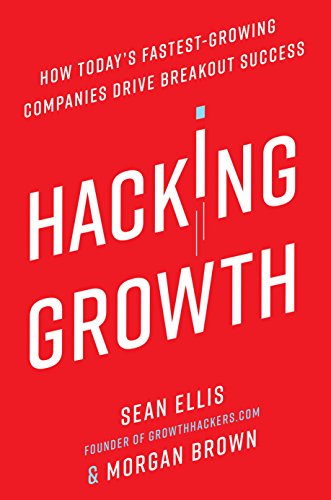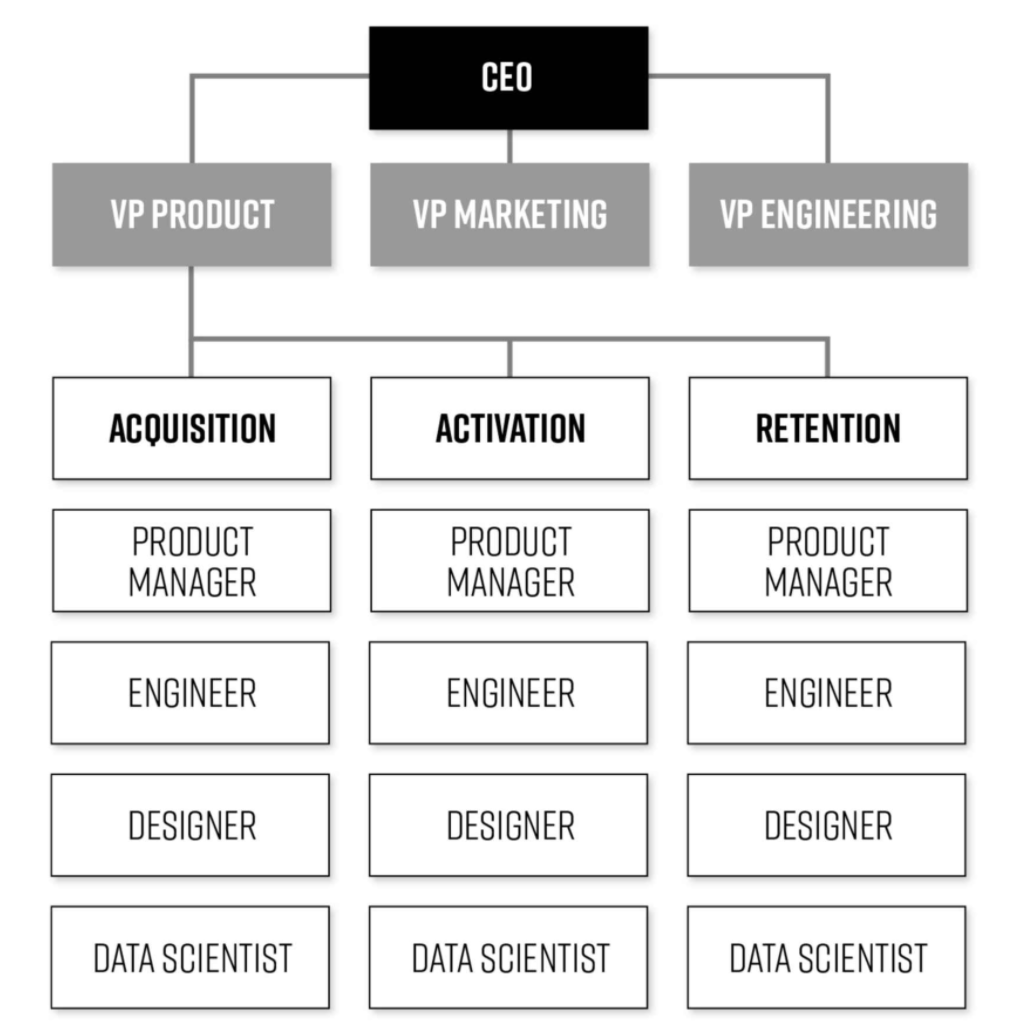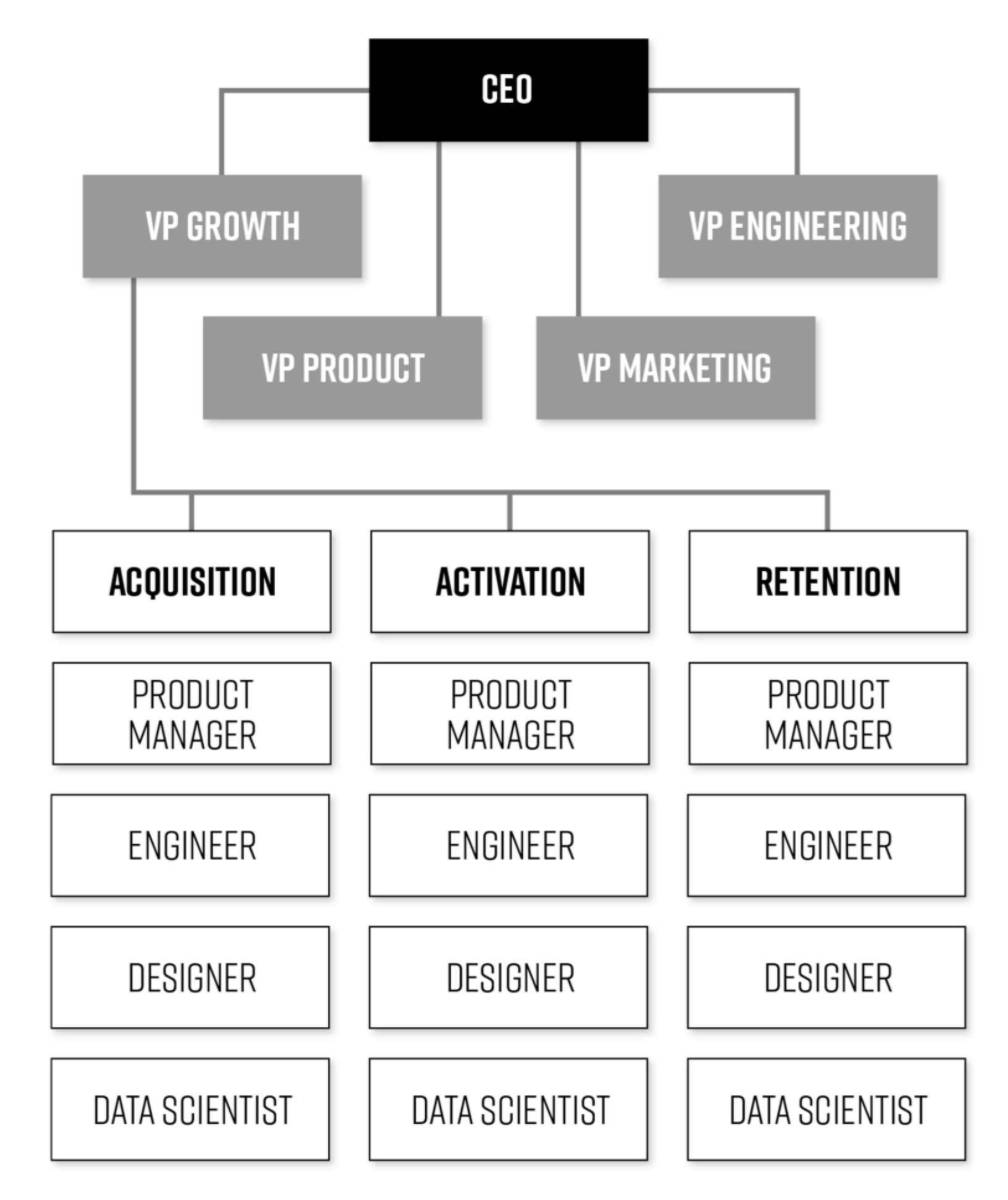Hacking Growth
Key Insights
The Pirate Stack, or where a Growth team works (with lots of concrete ideas about what to do in each phase.)
- Acquisition
- Activation
- Retention
- Revenue
Avoid Growth stalls
- Don’t get complacent due to overconfidence in market positioning.
- Don’t lose focus on core products or services.
- Innovate.
Grow or Die
- Double down on ideas that are working.
- Run a disciplined team and process.
- Experiment, experiment, experiment.

Details
How Growth teams are commonly structured
Growth teams are a multidisciplinary team with a focus on speed and experimentation. They usually comprise of:
- Product Managers with deep understanding of strategy and business goals.
- Data Analysts focusing on Experimental design and analysis. They generate insights into customer behavior and segmentation.
- Marketing
- Leadership. Growth teams should be led by the equivalent of a Battalion commander:boots on the ground, managing the day to day, and actively participating in the idea generation and experimentation process. they should have basic fluency with data analysis, product management, designing and running experiments.
There are two flavors of Growth team leadership and org structure:
- Product Led Growth Team. They report into product leadership. Advantage is that they are more tightly integrated with the rest of product.

- Independent Led Growth Team. They report into the CEO. Advantage is that they have more autonomy to work across the company.

Growth Hacking Process
- Analyze data and gather insights.
- Prioritize experiments.
- Run the experiments.
- Generate ideas.
- Back to step 1.
Grow a successful product
Make sure that a product has Product-Market Fit (PMF) before growth. Determining PMF using a survey:
- How disappointed would you be if this product no longer existed tomorrow?
- a) Very disappointed
- b) Somewhat disappointed
- c) Not disappointed (it really isn’t that useful)
- d) N/A—I no longer use it
- What would you likely use as an alternative to [name of product] if it were no longer available?
- I probably wouldn’t use an alternative
- I would use:
- What is the primary benefit that you have received from [name of product]?
- Have you recommended [name of product] to anyone?
- No
- Yes (Please explain how you described it)
- What type of person do you think would benefit most from [name of product]?
- How can we improve [name of product] to better meet your needs?
- Would it be okay if we followed up by email to request a clarification to one or more of your responses?
Getting to Must-Have
Talk to users (or risk building features that nobody wants.) Listen and observe. Be careful to not sell.
Analyze your data:
- Create a data lake.
- Set up event tracking
- Look at feature correlations for
Fundamental Growth Equation
A growth equation is a simple formula that represents all of the key factors that will combine to drive your growth. It is different for every product or business. Common drivers:
- New user acquisition
- Higher activation
- Better retention
North Star Metric
A number that we can obsess over. It must be simple eg. for Uber Rides, the metric was Rides Completed. For Facebook sharing, our number was Original Posts. This metric isn’t set in stone and can change over time. Don’t obsess about getting it perfect.
A good plan violently executed now is better than a perfect plan tomorrow. – General George Patton
Growth Experiments
Growth teams have a high experiment cadence (20-30 / week at scale). There are two phases, corresponding to two meetings:
- Idea generation. Everyone is welcome to add ideas; focus area owners must add ideas. Ideas should be crisp and clearly articulate what we expect to move.
- Weekly prioritization. Prioritize the list of ideas using some scoring system. Examples of scoring systems:
- ICE
- Impact
- Confidence
- Ease
- TIR
- Time
- Impact
- Resources
- PIE
- Potential
- Importance
- Ease
- ICE
- Experiment review. Look at all existing experiment for success or failure. Use a 99% confidence level instead of 95%.
[[Acquisition]]
Start by crafting a compelling message. The message is not just about your brand but improves the product as well.
Pick a channel. Be selective and put resources on fewer channels rather than spreading bets around. See the book for examples of channel categories, and Brian Balfour’s strategies around picking the right channel.
Activation
Get new users to the aha moment faster:
- Map the route to the aha moment.
- Create a funnel report of conversions and dropoffs.
- Eradicate friction.
Optimize the New User Experience (NUX). The first time someone experiences your product is a unique, one-time encounter. The NUX should be treated as a product by itself. Craft a special experiencee.
Retention
Retention is fundamentally about providing customers with a product or service of high quality that continuously addresses their needs, or delights them, and which they come to regard as must have.
Phases of retention:
- Initial. This is an extension of activation work. What gets users from merely activated to commited?
- Medium. The Hooked model by Nir Eyal provides a model to turn products into habits. Here’s my summary of Hooked.
- Long term. Optimize existing features. Introduce a steady stream of new features. Resurrect zombie customers.
Revenue
Authors give a survey based method for pricing SaaS products.
Pricing Relativity: people’s perceptions of prices are influenced by the prices of other options they are offered.
Pricing requires a study of Consumer Psyechology. References:
- Predictably Irrational by Dan Arielly
- The Art of Choosing by economist Sheena Iyengar.
- Robert Cialdini’s principles from Influence.
Building a Virtuous Growth Cycle
Avoid Growth stalls
- Complacency due to overconfidence in market positioning.
- Lose focus on core products or services.
- Failure to innovate.
Grow or die
- Double down on ideas that are working.
- Dig deeper for data gold.
- Dive into new channels as they are built.
- Open up the ideation process.